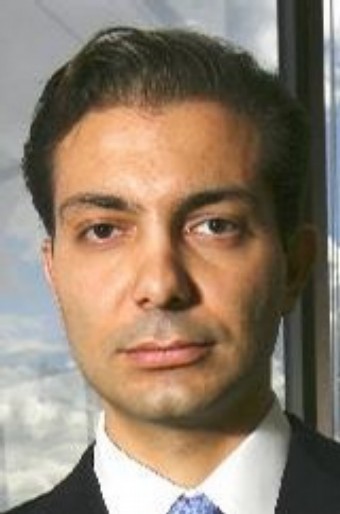
Iranian-born businessman Sardar Biglari has beaten back a stockholder challenge to his control of the Steak ’n Shake restaurant chain.
Biglari, 37, defeated an upstart challenge last Thursday, with the sitting board retaining all six seats, the company announced.
The fight over Biglari Holdings Inc. had drawn attention for its unusually high amount of drama, even for an activist fight. The Wall Street Journal reported the battle blow-by-blow for its business readers.
The strange challenge came from Groveland Capital, a small $25 million hedge fund, which bought a 0.2 percent stake and then tried to throw out the entire board, including Biglari.
Minnow-sized Groveland accused Biglari of a host of shareholder unfriendly actions, such as transferring company assets into a fund he manages to gain out-sized personal payments. Perhaps the main move that has raised eyebrows is a unique branding arrangement whereby Steak ‘n Shake would have to pay Biglari as much as $100 million if stockholders ever ousted Biglari from control.
Biglari Holdings countered that Groveland’s slate of directors had no restaurant experience and warned that Groveland was trying to take over the company without paying a premium and without announcing any plan for handling the firm.
Biglari also responded to the challenge by going after Groveland the same way Groveland was going after him. Biglari bought stock in two small companies where Groveland is on the board.
One shareholder at the stockholders’ meeting tweeted that he had asked Biglari whether he had learned anything from the confrontation and Biglari replied he learned how stupid others are.
Biglari has long said he aspires to build Biglari Holdings into another Berkshire Hathaway investing conglomerate. Berkshire Hathaway is Warren Buffet’s investing vehicle.
Biglari Holdings was created after Biglari seized control of Steak ‘n Shake during the financial crisis and quickly restored the burger chain to financial health. Once the business recovered, Biglari then began investing cash flows in new areas such as Cracker Barrel Country Store, and ancillary business lines like Maxim magazine.
But Groveland challenged that notion in its proxy campaign, accusing Biglari of being a shareholder unfriendly, chronic under-performer. The fund used Biglari’s $34.4 million pay package in 2014 amid declining operating and stock performance, to argue change was needed.
Proxy advisory firms Institutional Shareholder Service and Glass Lewis agreed with much of Groveland’s criticism, but they found a slate of directors proposed by the Groveland equally unappealing.
Groveland’s campaign failed to unseat Biglari, but, Forbes magazine said, “It did remove the Buffett-like aura Biglari’s commanded since emerging on the investing scene in 2008.”
Forbes said, “In both practice and performance, Biglari is no new Warren Buffett. Biglari Holdings, furthermore, is likely to continue underperforming shares of Berkshire Hathaway as it’s done for the past one, three and five years. If investors want a so-called ‘jockey’ or master capital allocator, they should stick with the ‘Oracle of Omaha’”—Buffett.
In a 2011 letter to shareholders—another copy of a Buffet practice—Biglari called Biglari Holdings a “jockey stock.” He explained that by saying: “You are choosing the jockey; I am choosing the horses.”
Biglari became nationally famous in the investor world a few years ago when he launched an effort to seize control of Cracker Barrel, another chain of restaurants. Biglari hasn’t given up the effort despite losing four successive stockholder votes.
Biglari appeared in 2013 on Forbes’ list of the “20 Most Powerful CEOs 40 and Under”—a list headed by Google’s Larry Page.
In 1984, Biglari came to the United States with his parents, settling in San Antonio, Texas.
After graduating from Trinity University in 1999, he started his own hedge fund, and he’s been steadily launching corporate takeovers ever since.
First, he took over the 86-restaurant chain Western Sizzlin. Then he went after Friendly’s, but that effort failed and the chain was ultimately acquired by a private equity fund.
From there, Biglari set his sights on Steak ‘n Shake. After another takeover battle, Biglari led the turnaround efforts at that struggling fast food chain. Biglari took over Steak ‘n Shake in 2007. In 2008, the company had losses of $22.9 million, but in 2010 it had a net profit of $29.4 million. However, profits have since eased off.
Biglari is not just a fund manager who wouldn’t know a hamburger from a humdinger.
At Steak ‘n Shake, he isn’t just the owner, he took over as manager.
After joining Steak ‘n Shake’s board of directors in March 2008, he swiftly took over as chairman and CEO. He then implemented a top-down overhaul of its operations.
The overhaul helped the company to 10 straight quarters of same-store sales growth. Steak ‘n Shake also went from losing more than $100,000 a day in 2009 to making more than $100,000 a day in 2010, according to Biglari’s 2010 letter to shareholders.
But the man behind all this is often described in unflattering terms. His aggressive approach to taking control of businesses has put off some. And his move to standardize pricing and menus across the Steak ‘n Shake system sparked a backlash from franchisees, some of whom even filed a lawsuit against him. He’s also known for secrecy.
“Although we cheerfully will discuss our investment philosophy and operating catechism as we believe it necessary to clarify expectations for [our shareholders], we will not telegraph our interests in specific publicly traded companies, our rationale, or our plans,” Biglari said in his 2010 letter. “Outside of regulatory requirements, we will not air our investment ideas, particularly in a world of investment competitors. We leave the yammering to others.”
Biglari reportedly was inspired to become an investor after reading a book about Buffett and discovering that the two shared their birthday. Rumor goes that he has Buffett-signed memorabilia in his office and follows Berkshire Hathaway’s progress carefully.
Today, rarely is an article written about Biglari without a comparison to Buffett. It’s not lost on people that Biglari’s holding company is structured like Buffett’s.
Jim Gillies, a private investor and contractor for the financial-services company, The Motley Fool, has followed Biglari’s career since 2006 and is a Biglari Holdings shareholder.
“I think [Biglari has] cultivated an image of trying to be another Buffett, and, if some of the investment community ran a little too far with that analogy, that’s hardly his fault—although he did nothing to discourage it,” Gillies says.
Biglari and his business partner, Philip Cooley, built a solid portfolio of investments between 2000 and 2005, when they bought a share of Western Sizzlin.
Biglari soon became chairman of the board at the company. He then took an investor’s approach to Western Sizzlin by creating a holding company that broke the chain up by individual subsidiaries. Each subsidiary was treated as a separate business, and cash from each was redirected to the best investment within the holding company.
Since taking control of Western Sizzlin (which Biglari Holdings fully acquired in 2010), Biglari has continued to pursue opportunities in the restaurant industry.
He refuses, however, to be considered a restaurant-focused company and has made moves to diversify his portfolio, including a failed attempt at acquiring an insurance company.
“The critical point is that we could in one particular moment derive most of our earnings from one industry, such as restaurants, and then with a single large acquisition begin to derive most of our earnings from a different industry,” Biglari said in his 2010 letter. “Although capital allocation is a crucial element at most businesses, it is our business at BH.” BH stands for both Biglari Holdings and Berkshire Hathaway, Buffet’s firm.





















